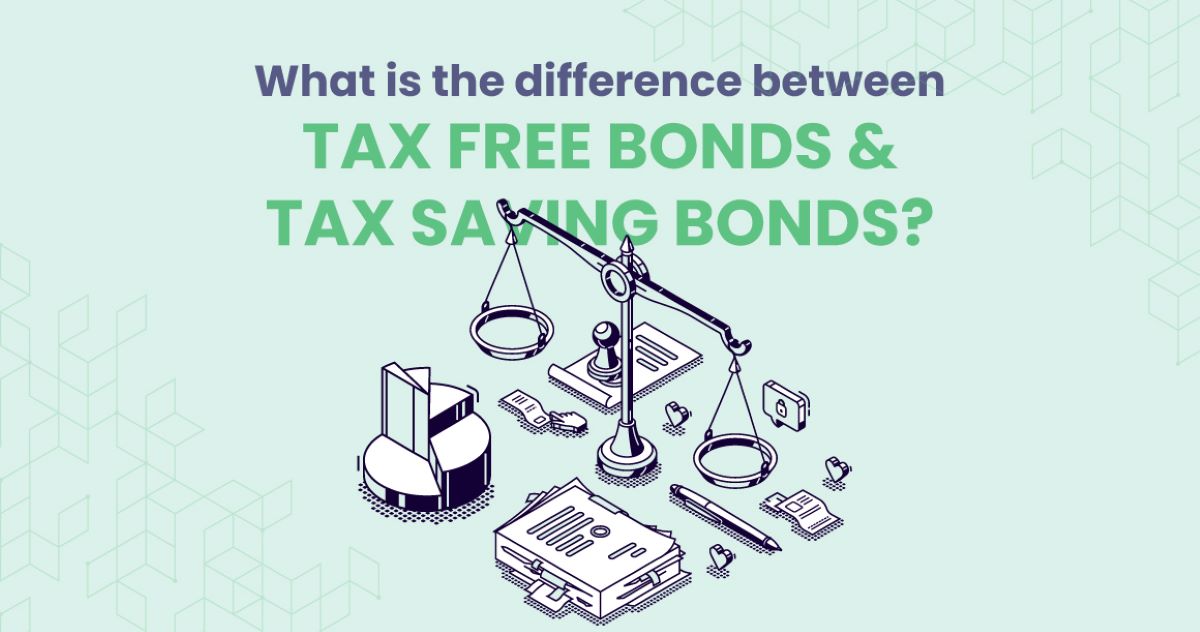

Finance
How Much Tax Do You Pay On Savings Bonds
Published: January 16, 2024
Discover how much tax you pay on savings bonds and gain valuable insights into finance. Plan your investments wisely and optimize your savings.
(Many of the links in this article redirect to a specific reviewed product. Your purchase of these products through affiliate links helps to generate commission for LiveWell, at no extra cost. Learn more)
Table of Contents
- Introduction
- What are Savings Bonds?
- Types of Savings Bonds
- How Savings Bonds Work
- Interest and Maturity of Savings Bonds
- Taxation of Savings Bonds
- Taxation of Series EE Bonds
- Taxation of Series I Bonds
- Taxation of Treasury Inflation-Protected Securities (TIPS)
- Taxation of Savings Bond Interest for Education Expenses
- Conclusion
Introduction
Welcome to the world of savings bonds, a popular investment option for individuals looking to grow their savings while minimizing risk. Whether you’re planning for short-term financial goals or aiming for long-term wealth accumulation, understanding the tax implications of savings bonds is key to maximizing your returns.
Savings bonds are a type of government-issued debt security that allow individuals to lend money to the government in exchange for a fixed interest rate over a specified period of time. These bonds are considered one of the safest investment options available due to the backing of the government.
By investing in savings bonds, you not only support the government’s financing needs but also have the opportunity to receive interest payments and potentially earn a return on your investment. However, it’s important to be aware of the tax implications associated with these bonds to effectively plan your financial strategy.
As a wise investor, understanding the different types of savings bonds and their taxation rules will help you make informed decisions and avoid any surprises come tax season. In this article, we will explore the various types of savings bonds and dive into the details of their tax implications, empowering you to make smart financial choices.
So, whether you’re a seasoned investor or a novice looking to dip your toes into the world of savings bonds, join us as we navigate through the complex terrain of taxes on savings bonds, uncover valuable insights, and ultimately help you optimize your investment portfolio.
What are Savings Bonds?
Savings bonds are financial instruments issued by the government to raise funds for various purposes, such as financing government projects, infrastructure development, and meeting the country’s financial needs. These bonds are considered low-risk investments and are typically backed by the full faith and credit of the government.
When you purchase a savings bond, you are essentially lending money to the government. In return, the government pays you interest over a predetermined period, making it an attractive option for individuals looking for a secure investment.
Savings bonds are different from other types of investments in several ways. First, they have a fixed interest rate, which means the rate of return remains the same throughout the bond’s term. This provides certainty and stability for investors who prefer lower-risk options.
Another key characteristic of savings bonds is their maturity period. Maturity refers to the length of time before you can redeem the bond for its full value, plus any earned interest. Maturity periods vary depending on the type of savings bond you choose, ranging from as short as one year to as long as 30 years.
One unique feature of savings bonds is that they are typically not traded on secondary markets like stocks or bonds. Instead, they are purchased directly from the government, either online or through financial institutions. This feature makes savings bonds more accessible to individual investors and encourages long-term saving.
As an investor, it’s important to understand that savings bonds offer a fixed return, which may not provide significant growth or inflation-beating returns compared to other investment options. However, they do offer stability and security, making them an attractive choice for conservative investors or those looking to diversify their portfolio.
In the next sections, we will explore the different types of savings bonds available and delve into the specific tax considerations associated with each. By understanding the nuances of savings bonds and their taxation, you can make informed decisions about your investments and maximize your savings.
Types of Savings Bonds
There are several types of savings bonds available for investors, each with its own unique features and benefits. Let’s take a closer look at the most common types:
-
Series EE Bonds:
Series EE bonds are one of the most well-known and widely held savings bonds. These bonds are issued at a discount to their face value and accrue interest over a period of 30 years. They can be purchased in denominations as low as $25 and are available for both online and paper form.
-
Series I Bonds:
Series I bonds, also known as inflation-indexed bonds, offer investors protection against inflation. The interest rate is a combination of a fixed rate and an inflation rate adjusted semi-annually. Like Series EE bonds, they have a 30-year maturity period and can be purchased in both online and paper form.
-
Treasury Inflation-Protected Securities (TIPS):
TIPS are similar to Series I bonds in that they provide protection against inflation. However, unlike savings bonds, TIPS have a fixed interest rate, with the principal adjusted for inflation. They have a variety of terms, ranging from 5 to 30 years, and are available in electronic form only.
Each type of savings bond has its own advantages and considerations. Series EE bonds are known for their fixed interest rates and long maturity period, making them a suitable choice for long-term savings goals. Series I bonds, on the other hand, provide inflation protection, which can be beneficial in times of rising prices. TIPS offer a fixed rate of return adjusted for inflation, making them ideal for investors looking to hedge against inflation.
It’s important to understand the characteristics of each type of savings bond before making a decision. Consider your financial goals, risk tolerance, and investment timeline to determine which type of savings bond aligns with your investment strategy.
Now that we have explored the different types of savings bonds available, let’s delve into how these bonds work and the interest and maturity periods associated with them.
How Savings Bonds Work
Savings bonds are relatively simple investment vehicles that work on the basis of borrowing money to the government in exchange for a fixed interest rate. Here’s a breakdown of how savings bonds work:
-
Purchasing:
Individuals can purchase savings bonds either online through the U.S. Department of the Treasury’s website or from financial institutions such as banks and credit unions. The bonds can be bought in various denominations, typically ranging from $25 to $10,000.
-
Interest Rates:
Each type of savings bond has a fixed interest rate that is determined at the time of purchase. The rate remains constant throughout the bond’s term, providing investors with a predictable return. The interest on savings bonds is typically compounded semi-annually.
-
Term and Maturity:
Savings bonds have a predetermined maturity period, which is the length of time the bond must be held before it reaches its face value. Maturity periods vary depending on the type of savings bond. For example, Series EE bonds have a maturity period of 30 years, while Series I bonds have a maturity period of 30 years. TIPS have terms ranging from 5 to 30 years.
-
Redemption:
After the maturity period, savings bonds can be redeemed for their face value, plus any earned interest. Bonds can also be redeemed before maturity, but early redemption may result in a penalty in the form of forfeiting a portion of the earned interest.
One important aspect to note is that interest on savings bonds is not paid out periodically like other investments. Instead, it is added to the bond’s value and paid out at the time of redemption. This feature allows for compounding interest over the life of the bond.
Additionally, it’s worth mentioning that savings bonds are considered non-transferable. This means that they cannot be sold or traded on secondary markets like stocks or bonds. The bonds are registered with the owner’s name and are not transferable to another individual.
By understanding how savings bonds work, you can make informed decisions when purchasing them and align your investment strategy with your financial goals. Now, let’s explore the specific details of how interest is calculated and the maturity periods of different types of savings bonds.
Interest and Maturity of Savings Bonds
The interest and maturity periods of savings bonds are important factors to consider when investing in these government-backed securities. Let’s take a closer look at how interest is calculated and the maturity periods for different types of savings bonds:
Interest Calculation:
The interest on savings bonds is calculated based on the fixed interest rate set at the time of purchase. The rate remains constant throughout the bond’s term. For Series EE and Series I bonds, interest accrues monthly and is compounded semi-annually.
When calculating the total interest earned, it’s important to consider the bond’s term. For example, a Series EE bond purchased for $100 with a 2% interest rate will earn $2 in interest annually. Over a 10-year term, the bond will accrue a total of $20 in interest.
Maturity Periods:
The maturity period of a savings bond refers to the length of time it must be held before it reaches its face value. Different types of savings bonds have varying maturity periods:
- Series EE Bonds: These bonds have a maturity period of 30 years. However, if held for at least 20 years, they will reach their face value and continue to earn interest for another 10 years.
- Series I Bonds: Series I bonds also have a maturity period of 30 years. However, they reach their face value sooner than Series EE bonds. They reach their face value in as little as 12 years and continue to earn interest for the remaining 18 years.
- Treasury Inflation-Protected Securities (TIPS): TIPS have varying terms, ranging from 5 to 30 years. At maturity, the principal value of the bond is adjusted for inflation, providing protection against rising prices.
It’s essential to consider the maturity period when investing in savings bonds. Longer-term bonds, such as Series EE and Series I bonds, may be suitable for individuals with long-term financial goals, while shorter-term TIPS may be more appropriate for individuals seeking inflation protection over a specific period.
Understanding the interest and maturity periods of savings bonds allows investors to assess the potential returns and align their investment strategy with their financial goals and timelines. In the next sections, we will explore the taxation of savings bonds, which can significantly impact the overall return on investment.
Taxation of Savings Bonds
When it comes to taxation, savings bonds have specific rules that determine how the interest income is taxed. Understanding these tax implications is crucial for effectively managing your investments and planning your finances. Let’s explore the taxation of savings bonds:
Accrual Method: Savings bonds are subject to the accrual method of taxation, which means you are required to report the interest earned each year, even if you haven’t received the actual interest payment. This ensures that the interest income is accurately reflected in your annual tax returns.
Federal Income Tax: The interest earned on savings bonds is subject to federal income tax, but exempt from state and local income taxes. However, it’s important to note that the interest from savings bonds used for educational expenses may qualify for additional tax benefits, which we will discuss later in this article.
Depository Institution: If you purchased savings bonds from a depository institution, such as a bank or credit union, they might report the interest income to the Internal Revenue Service (IRS) on your behalf. In such cases, you will receive a Form 1099-INT detailing the taxable interest income you earned during the tax year.
Holding Period: The interest earned on savings bonds is generally taxable in the year it is earned, even if you haven’t redeemed the bonds. However, if you choose to defer reporting the interest income until the bond matures or is redeemed, you have the option to do so. This can be beneficial if you anticipate being in a lower tax bracket in the future.
Tax-Exempt Uses: If you use savings bonds to pay for qualified higher education expenses, such as tuition and fees, the interest earned may be tax-free. To be eligible for this tax exemption, you must meet certain income requirements and use the savings bonds for qualified education expenses for yourself, your spouse, or a dependent.
Alternative Minimum Tax (AMT): It’s important to consider the Alternative Minimum Tax when assessing the taxation of savings bonds. The interest earned on savings bonds is generally not subject to AMT. However, if you have a significant amount of interest income or if you’re subject to AMT for other reasons, consult with a tax professional to understand the specific implications for your situation.
To ensure accurate reporting and compliance with tax regulations, it is recommended that you consult with a tax advisor or utilize tax preparation software when filing your tax returns. They can provide guidance on how to accurately report the interest income from your savings bonds.
Now that you understand the general taxation rules for savings bonds, let’s delve into the specific tax considerations for different types of savings bonds, including Series EE bonds, Series I bonds, and Treasury Inflation-Protected Securities (TIPS).
Taxation of Series EE Bonds
Series EE bonds are a popular savings bond option for many investors. When it comes to taxation, the interest earned on Series EE bonds is subject to specific rules. Let’s explore the taxation of Series EE bonds:
Tax Deferral: Unlike most investments, the interest earned on Series EE bonds can be tax-deferred until the bonds are redeemed, or they reach their final maturity after 30 years. This means that you have the option to defer reporting the interest income on your annual tax returns.
Taxable Events: There are specific situations that trigger a taxable event for Series EE bonds, requiring you to report the interest income in the year it occurs, even if you haven’t redeemed the bonds. These taxable events include reaching the final maturity of the bond (after 30 years), redeeming the bond, or the bond being subject to an ownership change.
Deferred Reporting: If you choose to defer reporting the interest income, you have the option to do so until the bond matures or is redeemed. However, keep in mind that if you defer reporting, you will not receive a Form 1099-INT from the depository institution, as they are not required to report interest income until it is redeemable.
Election to Report Annually: Alternatively, you can elect to report the interest income annually, even if you haven’t redeemed the bonds. This may be beneficial if you anticipate being in a lower tax bracket during a specific tax year or if you want to ensure accurate reporting and compliance with tax regulations.
Education Tax Exclusion: If you use the proceeds from Series EE bonds to pay for qualified higher education expenses, you may be eligible for the education tax exclusion. To qualify, you must meet certain income requirements and use the savings bonds for eligible education expenses for yourself, your spouse, or a dependent.
It’s important to note that the taxation of Series EE bonds may vary depending on when the bonds were purchased. For bonds issued after 1989, specific rules apply to determine whether tax deferral is available. Consult with a tax professional or refer to IRS guidelines for the specific tax rules applicable to your Series EE bonds.
Understanding the taxation of Series EE bonds can help you make informed decisions about holding, redeeming, or deferring reporting on these savings bonds. Now, let’s explore the tax implications of Series I bonds.
Taxation of Series I Bonds
Series I bonds, also known as inflation-indexed bonds, offer unique features when it comes to taxation. Understanding the tax implications of Series I bonds is important for maximizing your investment returns. Let’s explore the taxation of Series I bonds:
Tax-Deferred Growth: Similar to Series EE bonds, the interest earned on Series I bonds is eligible for tax deferral until the bonds are redeemed or reach their final maturity after 30 years. This means you have the option to defer reporting the interest income on your annual tax returns.
Annual Accrual: Although interest on Series I bonds can be tax-deferred, it is important to note that the interest income is accrued annually. This means that you are required to report the accrued interest each year, even if you choose to defer reporting it until redemption or maturity.
Taxable Events: Just like Series EE bonds, there are specific situations that trigger a taxable event for Series I bonds. These taxable events include the final maturity of the bond after 30 years, redeeming the bond, or an ownership change that results in a reportable interest payment.
Education Tax Exclusion: The proceeds from Series I bonds used for qualified higher education expenses may be eligible for the education tax exclusion. Similar to Series EE bonds, you must meet certain income requirements and use the savings bonds for eligible education expenses for yourself, your spouse, or a dependent.
Reporting Options: For Series I bonds, you have the option to choose whether to report the accrued interest annually or defer reporting until redemption or maturity. It’s important to assess your current and future tax situations to determine the most advantageous reporting strategy for your individual circumstances.
As with any investment, it’s essential to consult with a tax professional or refer to IRS guidelines to ensure accurate reporting and compliance with tax regulations. Series I bonds offer tax advantages, but it’s crucial to understand the specific rules and limitations applicable to your particular situation.
Now that we have explored the taxation of Series I bonds, let’s move on to understanding the tax implications of Treasury Inflation-Protected Securities (TIPS).
Taxation of Treasury Inflation-Protected Securities (TIPS)
Treasury Inflation-Protected Securities (TIPS) are designed to protect against inflation by adjusting their principal value based on changes in the Consumer Price Index (CPI). When it comes to taxation, TIPS have specific rules that investors should be aware of. Let’s explore the taxation of TIPS:
Interest Income: The interest earned on TIPS is subject to federal income tax. Unlike Series EE and Series I bonds, which allow for tax deferral, the interest on TIPS is taxable in the year it is earned. It’s important to account for this interest income when reporting on your annual tax returns.
Principal Adjustments: TIPS have semi-annual adjustments to their principal value based on changes in the CPI. Although these adjustments are not considered interest income, they are treated as taxable income in the year they occur. It’s important to account for the principal adjustments when determining your tax liability.
Reporting: The interest income and principal adjustments of TIPS are reported on an annual basis. Financial institutions typically provide you with a Form 1099-INT that outlines the taxable interest income earned during the tax year. It’s important to ensure accurate reporting of this income to comply with tax regulations.
Tax-Exempt Use for Education: Similar to Series EE and Series I bonds, if you use the proceeds from TIPS to pay for qualified higher education expenses, you may be eligible for the education tax exclusion. This can provide tax benefits when using TIPS for educational purposes.
As with any investment, it’s crucial to consult with a tax professional or refer to IRS guidelines to ensure accurate reporting and compliance with tax regulations. Understanding the taxation of TIPS allows you to effectively manage your investments and plan your finances.
Now that we have explored the tax implications of savings bonds, including Series EE bonds, Series I bonds, and TIPS, let’s move on to understanding the tax considerations for using the interest from savings bonds for education expenses.
Taxation of Savings Bond Interest for Education Expenses
Using the interest from savings bonds to pay for qualified higher education expenses can provide tax benefits for investors. Let’s explore the tax considerations when using savings bond interest for education expenses:
Education Tax Exclusion: The interest earned on savings bonds, including Series EE bonds, Series I bonds, and TIPS, may be eligible for the education tax exclusion if used to pay for qualified higher education expenses.
Qualified Expenses: Qualified higher education expenses include tuition fees, required books, and supplies. Room and board expenses are not considered qualified expenses for the purpose of the education tax exclusion.
Eligibility Requirements: To qualify for the education tax exclusion, you must meet certain income requirements. The exclusion is phased out for higher-income individuals, and there are limitations on the amount of interest that can be excluded.
Reporting Requirements: You must report the savings bond interest on your annual tax returns, including the amounts used for qualified education expenses, to claim the education tax exclusion. It’s important to keep detailed records and documentation to support your claims.
Form 1099-INT: Financial institutions will provide you with a Form 1099-INT that summarizes the taxable interest income earned from savings bonds. This form is essential for accurately reporting the interest income and claiming the education tax exclusion on your tax returns.
Tax Benefits: By utilizing the education tax exclusion, you can exclude the savings bond interest income used for qualified education expenses from your taxable income. This can provide significant tax savings and help offset the costs of education.
It’s important to note that the education tax exclusion is specific to the interest earned on savings bonds used for education expenses. Other types of income, such as scholarships or grants, may impact your eligibility for certain tax benefits.
As with any tax-related matters, it’s crucial to consult with a tax professional or refer to IRS guidelines for the specific rules and limitations applicable to claiming the education tax exclusion. They can provide guidance and ensure accurate reporting to optimize your tax benefits.
Now that we have explored the taxation of savings bond interest for education expenses, let’s conclude our discussion with a summary of the key points and the significance of understanding the tax implications of savings bonds.
Conclusion
Understanding the tax implications of savings bonds is crucial for optimizing your investment strategy and maximizing your returns. By being aware of the specific rules and considerations surrounding taxation, you can make informed decisions and effectively manage your investments. Here are the key points to remember:
– Savings bonds, such as Series EE bonds, Series I bonds, and TIPS, provide a low-risk investment option backed by the government.
– Interest earned on savings bonds is subject to federal income tax but exempt from state and local income taxes.
– Savings bonds can offer tax deferral options, allowing you to choose when to report interest income.
– There are specific situations, such as maturity or redemption, that trigger a taxable event for savings bonds.
– Utilizing savings bond interest for qualified higher education expenses can provide tax benefits through the education tax exclusion.
It’s important to consult with a tax professional or refer to IRS guidelines when it comes to reporting and complying with tax regulations. This will ensure accurate reporting and help you take advantage of all available tax benefits.
By understanding the taxation of savings bonds, you can make informed decisions about your investment portfolio, align your financial goals with the appropriate bond types, and strategically plan for tax implications. Whether you’re saving for short-term goals or long-term wealth accumulation, savings bonds can be a valuable component of your overall financial strategy.
Remember to stay updated on any changes to tax laws and regulations that may impact the taxation of savings bonds. Regularly reviewing your investment portfolio and consulting with professionals will help you stay on track and make adjustments as needed.
In conclusion, by understanding the tax implications of savings bonds, you can navigate the world of investments with confidence, optimize your returns, and work towards achieving your financial goals.














